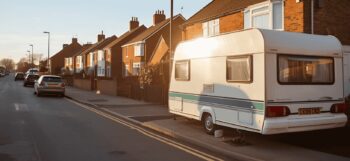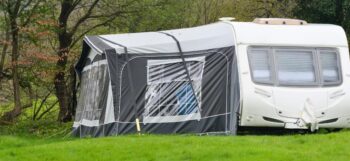Winter weather can present a unique set of challenges for park homeowners. However, if you prepare your home and surroundings, you can reduce the risks of damage to your property, and to yourself. If you haven’t yet set about winterproofing your home for the colder months ahead, there’s still time to do so.
To help, we explain the things you can do to make park home living during the winter months a much safer and more comfortable experience.
Get your boiler serviced
If your boiler isn’t serviced regularly, it may not be running as efficiently as it should and could be unsafe. Getting your boiler serviced now could save you from being left without hot water or heating, or from potentially receiving a hefty bill for repairs or a replacement. Regular servicing is best conducted by a Gas Safe Engineer, who can also assess your boiler for leaking carbon monoxide. Not all engineers are qualified to do all types of gas work, so check their capabilities beforehand. For your own safety and security, always remember to check their ID card before any work is undertaken.
Keep your pipes warm
Burst pipes are common during the winter months. Sudden freezing and thawing can potentially cause pipes to crack then burst, resulting in escape of water, which brings with it a whole new set of problems. Burst pipes can be prevented by insulating them with lagging. Lagging is a casing which is made with a range of materials, such as mineral/glass wool, flexible elastomeric foam, rigid foam, and polyethylene (flexible plastic foamed insulation- the most widely used type of pipe insulation).
It works by sealing in heat, which saves energy but there are also other reasons to insulate your pipes.
Cold environments attract water vapour. When this condenses on a pipe, it can lead to corrosion. It can also potentially encourage damp walls. Insulating your pipes prevents this by raising the surface temperature of the pipe and forming a water-vapour barrier.
Lagging can protect you from the potential dangers of exposed pipework, which can reach extreme temperatures of hot and cold. From a safety perspective, insulating them means you’re less likely to burn yourself.
Drain down while you’re away
If you plan to leave your park home for an extended period during the winter, and it is not possible to leave the heating on during this time, then you must drain down the entire system. This is to prevent freezing and potential damage that may occur. If your park home has a sealed heating system holding antifreeze, then this does not need to be drained down, but antifreeze levels should be checked annually and particularly prior to the winter months.
Bleed your radiators
If your radiators are colder at the top than at the bottom, it’s time to bleed them. Trapped air prevents heat circulating effectively and although it will not usually cause any damage, it will prevent your system from working as efficiently as it should. Other indicators of trapped air may be noises, such as gurgling and rattling.
British Gas explain how to bleed your radiators here, in this short video. Your park maintenance team may also be able to help you with this.
Insulation
If your home has less than 10 inches of insulation, it may be time to add more. By doing so, you could see up to a 30% reduction in your energy bills. Insulation doesn’t need to be costly, as there are many government grants and schemes for insulation installation.

Stop draughts with extra insulation
There’s nothing worse than feeling a draught in a warm and cosy room. Even the smallest of gaps around windows or underneath doors can allow that chilly air to filter in. Thick, floor length curtains, drawn across windows and doors can supply an extra layer of insulation to keep draughts at bay. As park homes typically have a higher glass-to-wall ratio than standard bricks and mortar buildings, thick curtains can make an enormous difference, even if you have double-glazed windows. Draught excluders that can be fitted to the bottom of a door are also recommended for keeping your park home cosy.
Check Vents
Keeping vents clear and unobstructed will allow the free flow of air, in and around your home. Good ventilation will help to prevent a build-up of condensation, which could lead to damage caused by damp or mould. As this kind of gradual damage is preventable with good ventilation, damage caused by damp or mould is an insurance industry-standard exclusion, meaning you will not be covered for it on any insurance policy.
Preparing externally
During the autumn months, fallen leaves can clog up guttering and potentially cause a blockage. Once blocked, the free flow of water will be restricted and water will look to escape wherever it can, namely into the roof and down the walls of your park home. Damage, caused through blocked guttering, can quickly turn into a huge and costly problem, leading to structural issues, leaking roofs and insect infestations. If you haven’t already checked your gutters, now would be a good time to do so. Trimming back trees will reduce the amount of foliage dropping into your guttering. It will also lessen the chances of branches blowing against the property, causing external damage.
Know what your insurance policy covers you for
When insuring your park home, it’s essential that you know what your policy covers you for, to avoid unexpected surprises in the event of a claim. Remember, no policy protects you against every scenario, so it’s best to read your policy documents thoroughly to understand the conditions and exclusions that apply.
Lifesure’s park home insurance cover includes 24-hour home emergency cover, supplying qualified contractors for emergency repairs (up to £500 per claim)[i]. Flood cover is also available, subject to eligibility criteria, even in known flood risk areas[ii].
For more information on our park home policy, visit our park home insurance page or speak to one of our customer advisers on 01480 402 460; we’d be more than happy to help.
[i] Home emergency cover is underwritten by Astrenska Insurance Limited, a trading style of Collinson Insurance Services Limited
[ii] There is a cost for covering your park home against flood through the Flood Re scheme and, if you do need to make a flood claim, there is a minimal £250 excess. Not all homes are eligible for the flood cover through the Flood Re scheme. Subject to eligibility criteria











